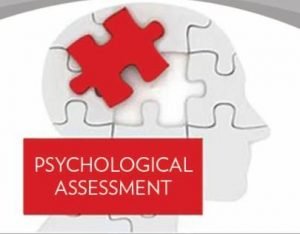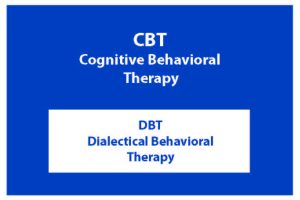Category: Mental Illness
 Obsessive-Compulsive Disorder (OCD) is a debilitating psychiatric disorder that presents in many forms. OCD is comprised of obsessions, which are persistent and unwanted intrusive thoughts, images, or urges. In OCD, these intrusive thoughts are considered ego-dystonic, meaning they are inconsistent with someone’s self-image, beliefs, and values. Therefore, these obsessions cause significant distress, anxiety, and worry and can greatly interfere with one’s life. To reduce or eliminate this distress or discomfort, OCD sufferers begin to engage in compulsions, which are ritualized behaviors or mental acts that serve to reduce their discomfort and anxiety. Unfortunately, engaging in compulsions reinforces obsessive thinking. Some subtypes of OCD include fears related to contamination, scrupulosity (religious-based fears)/morality, fear of harming others (aggressive or sexual), ordering and arranging, repeating, and checking. It should be noted that not all compulsions are outwardly observable and may include avoidance of triggers or mental compulsions.
Obsessive-Compulsive Disorder (OCD) is a debilitating psychiatric disorder that presents in many forms. OCD is comprised of obsessions, which are persistent and unwanted intrusive thoughts, images, or urges. In OCD, these intrusive thoughts are considered ego-dystonic, meaning they are inconsistent with someone’s self-image, beliefs, and values. Therefore, these obsessions cause significant distress, anxiety, and worry and can greatly interfere with one’s life. To reduce or eliminate this distress or discomfort, OCD sufferers begin to engage in compulsions, which are ritualized behaviors or mental acts that serve to reduce their discomfort and anxiety. Unfortunately, engaging in compulsions reinforces obsessive thinking. Some subtypes of OCD include fears related to contamination, scrupulosity (religious-based fears)/morality, fear of harming others (aggressive or sexual), ordering and arranging, repeating, and checking. It should be noted that not all compulsions are outwardly observable and may include avoidance of triggers or mental compulsions.
Recommended Questions for Assessing OCD
Exposure and Response Prevention (ERP) is a type of Cognitive-Behavior Therapy (CBT). Cognitive-Behavior Therapy varies from other types of talk therapy in that it is focused on changing thinking patterns and behaviors. It tends to be directed at the present, rather than the past and is goal-oriented and solution-focused. ERP aims to change behavioral patterns, allowing someone to confront their fears and therefore, reduce their OCD symptoms. ERP is widely considered to be the “gold standard” therapy for Obsessive-Compulsive Disorder.
Exposure refers to the direct confrontation of one’s fear through voluntarily taking steps towards their fears and triggers. Response Prevention refers to someone voluntarily agreeing to reduce their usual rituals and compulsions. It is very important for someone that is working on doing exposures to simultaneously refrain from engaging in compulsions. Without reducing or refraining from the related compulsions, the person cannot learn that they can tolerate the exposure or that the compulsion is unnecessary.
How is ERP done?
ERP is done by working with a therapist to examine the person’s specific obsessions and compulsions, generate a fear hierarchy, and begin to work on exposures while limiting engagement in compulsive rituals. A fear hierarchy is a personalized list of exposures. This list is created collaboratively by the person with OCD and their therapist. Exposures include situations, stimuli, or thoughts that evoke a strong, negative emotional response and to which the person has a fear or an aversion. Exposures on the fear hierarchy list should be very specific and can include variations of the same exposure (such as touching several different places on an object and for varying amounts of time). People with OCD often engage in avoidance of triggering stimuli to prevent unwanted distress as well. Much of the fear hierarchy can be generated by examining situations and stimuli that the person avoids. A Yale-Brown Obsessive-Compulsive Symptom (Y-BOCS) Checklist may be completed to help generate ideas. It can also be helpful to gather ideas from family members as well. The goal of exposure work is to slowly and carefully work to approach each of these triggers in a strategic manner.
In vivo exposures refer to confronting one’s fears “in life” or through direct confrontation. This type of exposure is appropriate for things that can be directly approached or confronted. Imaginal exposures refer to mentally imagining being exposed to one’s fears. This type of exposure is utilized for exposures not appropriate for direct confrontation (fear of hitting someone with one’s car). Similarly to in vivo exposures, imaginal exposures are done in a gradual manner and should always be done voluntarily. A SUDS (Subjective Units of Distress Scale) is used to communicate the person’s perceived level of distress, generated by engaging in exposures while refraining from compulsions. The fear hierarchy is arranged to allow someone to work from lower-level exposures to higher-level exposures.
The central premise of OCD is intolerance of uncertainty, with the goal of ERP being to increase the level of tolerance to uncertainty, rather than working to disprove the fear or find ways to become certain. Although it is very common for families to accommodate compulsive behavior or give reassurance when they see a loved one in distress, accommodation and reassurance exacerbate OCD by not allowing the person to learn to tolerate their discomfort. Instead, it is helpful to allow the person to gradually learn how to tolerate their distress with the help of a trained therapist.
How does ERP help with OCD symptoms?
Exposure and Response Prevention is accomplished through gradual behavioral change, which occurs in the form of habituation and extinction. Habituation occurs with repeated exposure to a particular stimulus. This happens when we become numb or desensitized to things that we see, hear, or do on a regular basis. For example, if we live next to a noisy highway, we might initially be very aware of the noise. However, after living there for a while, we become accustomed to this constant sound, and we learn how to “drown it out.” Habituation in ERP works in a similar manner by repeatedly exposing a person to their feared triggers. Over time they habituate to those triggers and the strong emotions associated with their fears disappear. Extinction occurs when a reinforcer (something that influences behavior) is no longer effective at bringing pleasure or reducing distress. In the case of ERP, by reducing the compulsive behavior that reinforces the anxiety or distress, the obsessive thoughts decrease over time.
If you believe that you or someone you know might be suffering from OCD symptoms, it’s important to reach out to a professional with specialized training in OCD treatment. With the proper treatment, OCD can be a very manageable condition.















